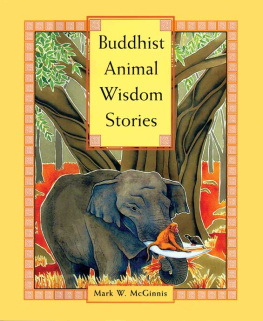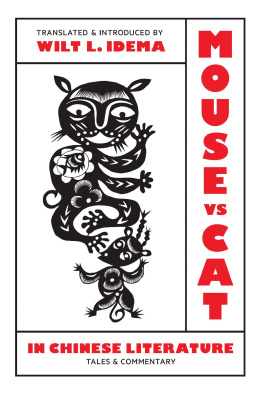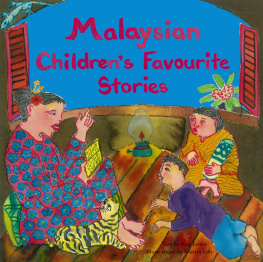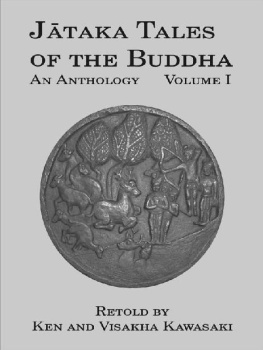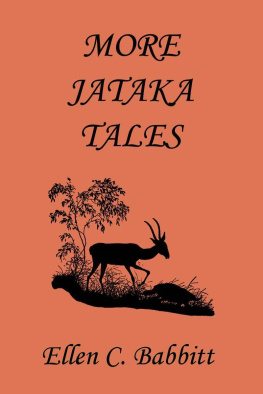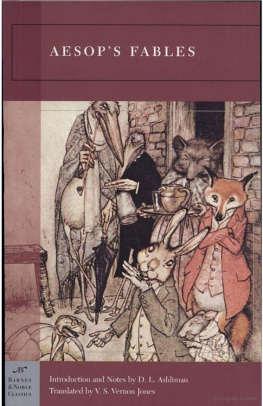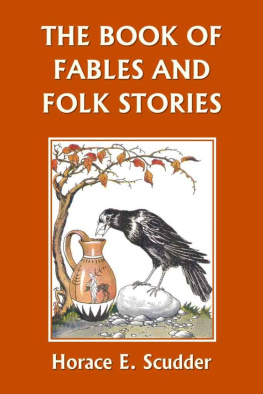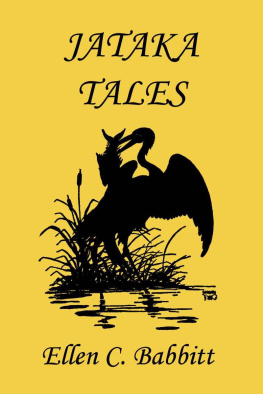ABOUT THE BOOK
Around the beginning of the common era, Indian Buddhists began to collect fables, or Jataka tales, illuminating various human virtues and foiblesfrom kindness, cooperation, loyalty, and self-discipline on the one hand to greed, pride, foolishness, and treachery on the other. Instead of populating these stories with people, they cast the animals of their immediate environment in the leading roleswhich may have given the tales a universal appeal that helped them travel around the world, surfacing in the Middle East as Aesops fables and in various other guises throughout East and Southeast Asia, Africa, Russia, and Europe.
Author and painter Mark McGinnis has collected over forty of these hallowed popular tales and retold them in vividly poetic yet accessible language, their original Buddhist messages firmly intact. Each story is accompanied by a beautifully rendered full-color painting, making this an equally attractive book for children and adults, whether Buddhist or not, who love fine stories about their fellow wise (and foolish) creatures.
MARK W. MCGINNIS is an artist and educator based at Northern State University in Aberdeen, South Dakota. His interdisciplinary projects have been featured in over 110 solo exhibitions nationwide, and his previous publications include Elders of the Faiths (Ex Machina Press), Lakota and Dakota Animal Wisdom Stories (Tipi Press), and Elders of the Benedictines.
Sign up to receive news and special offers from Shambhala Publications.

Or visit us online to sign up at shambhala.com/eshambhala.

Weatherhill
An imprint of Shambhala Publications, Inc.
4720 Walnut Street
Boulder, Colorado 80301
www.shambhala.com
Protected by copyright under the terms of the International Copyright Union. All rights reserved. No part of this book may be reproduced in any form or by any means, electronic or mechanical, including photocopying, recording, or by any information storage and retrieval system, without permission in writing from the publisher.
eISBN 978-0-8348-2601-4
ISBN 978-0-8348-0551-4
Editorial supervision: Jeffrey Hunter
Cover design: Liz Trovato
Library of Congress Cataloging-in-Publication data is available upon request.
Dedicated to my grandson Gabriel Rowan McGinnis
C ONTENTS

I first became aware of Buddhist animal wisdom stories when I was a graduate student at the university of Illinois, Champaign-Urbana, in the early 1970s. Along with my major in painting, I also pursued a minor in Oriental art history. It was then that I first encountered Buddhism and I was immediately drawn to its gentle, introspective spiritual path. I can recall my professors lectures on the Indian relief carvings depicting the Jataka tales, the stories of the Buddhas previous reincarnations, some of which were in various animal forms.
That stimulus lay dormant for twenty years until the early 1990s, when I was working on a body of paintings based on Lakota and Dakota animal wisdom stories. As I was working on this series I recalled the Buddhist stories and decided to do a project based on the Jataka tales. I had since become a practicing lay Buddhist and wished to use my talents to express some of the qualities I had discovered in my studies of Buddhism.
The 1990s, however, became filled with other projects dealing with world religions and two series of portraits and interviews with religious elders. When I was finishing the last group of portraits in 1999, I began to research the Jataka tales and prepare my long-delayed series on Buddhist animal wisdom stories. I found that the Jataka was a body of ancient Pali Buddhist scriptures that described five hundred fifty previous lives of the Buddha before his birth as Gautama, the prince of the Shakya clan. When this occurred in the late sixth century B.C.E., he attained complete enlightenment that released him from any future rebirth. This process of the Buddhas evolution through numerous lives is in accord with the widely held Indian belief in karma. In its simplest form, karma is the law of cause and effect, the principal that everything we do in this life shapes our current existence as well as our next. In his five hundred fifty previous lives, the Buddha had existed in a multitude of animal and human forms. In each life, his noble and compassionate deeds moved him higher toward his final greatness and emancipation.
I searched for published translations of animal Jatakas, sometimes finding four or five versions of the same story. To conclude my research, at the end of 1999 I made a three-week trip to India. My intent was to travel the Buddhist pilgrimage path for my personal spiritual growth and to search for more Jataka tales. I also planned to do sketches and photographic research to aid me in creating my illustrations in my studio at home. I achieved all my purposes on the tripthough rarely in the exact manner I had planned. India, I quickly learned, will shape and teach the visitor as she wishes.
In Bodh Gaya, the site of Buddhas enlightenment, I made a remarkable find, a late nineteenth-century compilation by E. B. Cromwell of five hundred fifty Jataka tales. During the trip I produced about seventy sketches and took hundreds of photographs that were to prove invaluable in creating the paintings. While extremely demanding and difficult in many ways, my visit was a great success in preparing for this project.
Back in my studio, I began the task of selecting the stories to work with in my series. It was a difficult job, but I finally arrived at forty-four stories that I chose for their moral teachings and visual potential. The older English translations were rather dated and difficult in style, so I decided to retell the stories in a contemporary American voice.
The Buddha used stories such as these to teach his monks how to live together harmoniously and to instruct them in the virtues that were at the core of his teachings. How many of these stories were original creations of the Buddha? How many were traditional folklore? How many were added after his death? We will never know the answers to these questions. We do know the Jatakas are stories that deal with compassion, loving kindness, avoiding trickery, the importance and responsibility of leadership, harmony, the evils of intoxication, ingratitude, greed, the danger of addiction, the certainty of change, the price of deceit, the importance of education, respect and care for elders, tolerance, generosity, false holiness, overcoming fear, the safety of familiar ground, the care needed in delegating duties, the danger of false praise, the consequences of talking too much, the necessity of foresight, the cruelty of hunting, the relative nature of beauty, the joys of friendship, knowing ones limits, and many more themes.
Employing animals to illuminate the basic human condition is a universal device for pointing out human foibles and virtues with clarity and humor; since those qualities remain much as they were two thousand five hundred years ago, these tales remain just as relevant today as they were then. My hope is that you will enjoy these stories and illustrations as much as I enjoyed researching, painting, and bringing them to you.
M ARK W. M C G INNIS
L ong ago there was a riverside inn situated between two Indian towns. Naturally, travelers stayed and dined at the inn, and some would sit outside drinking liquor. One of the drunken travelers spilled his bowl of beer, and the liquid settled into the hollow of a rock. A dung beetle was making his way to the river, being drawn there by the smell of droppings from the travelers animals. The beetle stumbled across the spilled beer and found it very tasty. He drank his fill and soon he had lost all his good sense. He staggered down to the riverbank and fell over the animal droppings and mud. When he finally got to his feet he sank into the mud. I am so mighty, said the drunken beetle, that the world cannot bear my massive weight!
Next page
